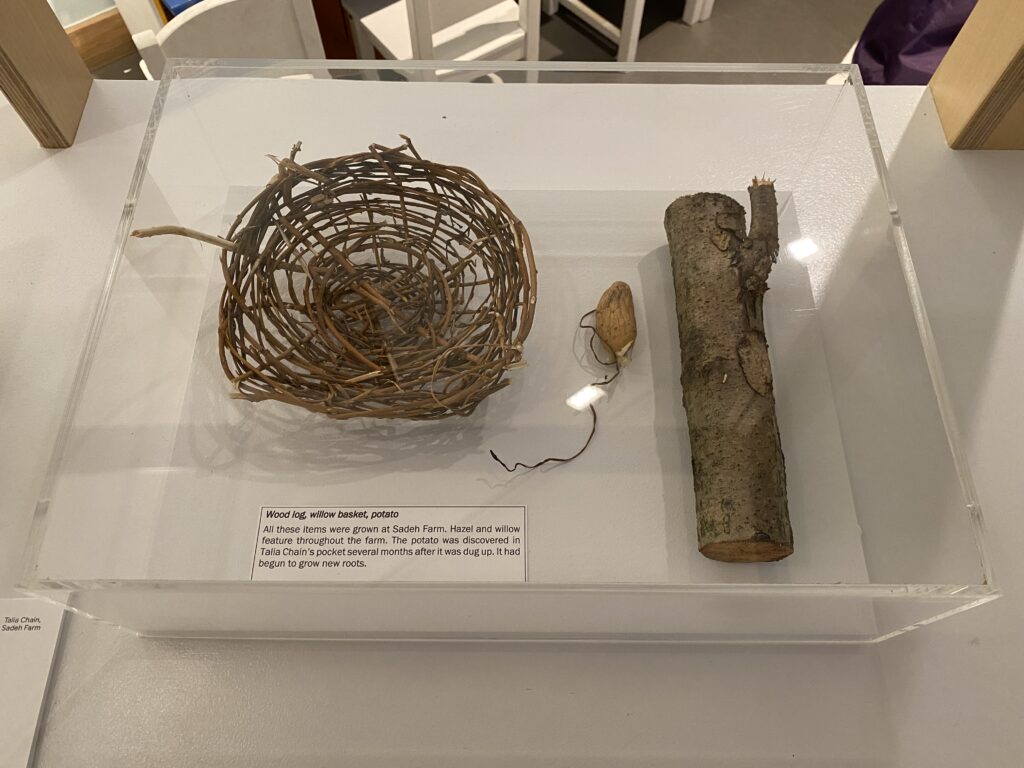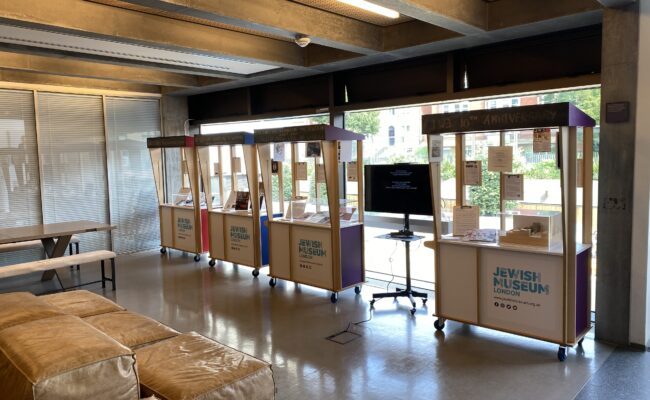A conversation between Jewish Museum London, & Talia Chain, CEO & Founder of Sadeh Farm

Museum: So what is Sadeh Farm?
Talia: We are a Jewish community farm based at Skeet Hill House in Orpington, on the border of Kent and London. The site has been owned by the Jewish Youth Fund since the 1940s and originally it was run by the Brady Club with wartime children visiting the goats and digging potatoes. Since then, many schools have been here on retreats and then Sadeh, my charity took over in 2018.
The focus has always been to get children, (but also people of all ages), outdoors connecting their Judaism with nature. Looking after our planet is a part of being Jewish; it’s in our text, our traditions, our heritage, our customs. It’s so important but also causes much anxiety in youth and adults today. So we try to engage with the topic in very practical way.
The farm is only seven acres, but we have a market garden where we grow our vegetables and fruits; we have a forest garden, which is a different way to grow fruit and vegetables; there’s a little woodland and meadow; our different gardens help increase our biodiversity on site, tackling climate change on the practical level in our own small way. It’s also about community, both as a Jewish community farm and as a farm within the local, mostly non-Jewish community. The community gardening we do is all about interactions between humans and soil and food.
Museum: what defines the Farm’s Jewish identity?
Talia: Jews are agricultural people. Take a grain of wheat. We sow it, plough it, cut it, harvest it, thresh it, mill it into flour and then make it into bread. It’s so connected to the laws of Shabbat where six days of the week we’re thinking about growing wheat and on the seventh we rest and enjoy what we’ve done. We’ve made food! Shabbat gives ourselves a moment’s peace and it’s in those moments that you can look around and be totally inspired by what you see around you, to look around and realise this world can only be divine. Once you’ve seen something so beautiful – an artichoke take flower, the purple spikes, all the bees come to take the pollen from it – how can one do anything but understand that this place is beautiful, it’s perfection. It’s been given to us, and we are its guardians. We need to do everything we can to remember that we are part of it and look after it.
Right now I’m looking at my favourite ash tree and I’ve watched the leaves fall and it’s turned into a winter tree and it’s just such a magical thing to then watch the leaves grow back next spring. It’s sounds kind of corny but it’s true.
Selecting an object
Museum: You’ve chosen some interesting objects to display. Can you tell us more about them?
Talia: Yes, well we wanted to display some of the wood from our small woodland. There’s a lot of hazel on site which we cut in preparation for the winter. We store it for a year or two, and then we burn it in our woodburner in our community spot; our volunteer kitchen which is really the hub of everything. This process is an amazing thing to do. It takes a long time for a tree to grow, and then when the time is right, you chop it and season it, but you need that patience. And that’s a very meditative practice.
It’s optimistic too. Thinking about your fuel and where it comes from – this renewable energy source – and it makes me reflect on where am I going to be in two years’ time when I’ll get to use this fuel that I seasoned myself. There’s nothing more beautiful than that.
Willow is another feature of our display. We use it on sukkot, one of the three main harvest festivals, but it’s also such an amazing growing material. It’s very easy to look after and we have loads of it at Sadeh farm. You just take a little bit of Willow, stick it in the ground, water it and before you know it, you’ve got loads of Willow and you can consistently cut it and use it and it keeps coming back. We use it as fencing, to create structures for things to grow up, it’s great for habitat wildlife, and we make baskets out of it too.
And then the third thing is a potato which I found in my farm coat pocket – I have lots of pockets and they always have interesting things in, and I must have picked this potato at the end of August. For some reason I put it in my pocket. Maybe it was a bit small and I didn’t want to put it in the main container but it’s just grown a massive kind of root from it and it’s trying to grow more potatoes. Basically, it’s trying to reproduce itself even though it’s been in my pocket probably since the end of August and I find that so cool. Potatoes are such resilient food.
I used to be the head food grower on site and I grew so many kinds of potatoes because they’re just the best vegetable to grow (especially for beginners). It’s a fantastic thing to do with children, or simply for yourself. They’re filling, delicious, and you could probably survive on potatoes alone with very little else. And they’re beautiful with purple or white flowers with a yellow bit in the middle. People don’t really know about potato flowers but they’re stunning things.
——————————————————————————————-
For more information visit: www.sadehfarm.co.uk/
